Eastern Red Cedar
- Scientific Name: Juniperus virginiana
- Parts Used: Berries (female cones), branches, leaves, bark
- Actions: Anti-inflammatory, Diaphoretic, Expectorant, Astringent, Antimicrobial, Diuretic, Antiasthmatic, Antifungal
The uses of Eastern Red Cedar branch out into many. They are very similar to the Old World, standard Common Juniper in that its female cones- or berries- are one of its favored usable parts, if not an attribute of the plant that really grabs the eye. When you see the Cedar’s fragrant branches heavily-laden with these bright blue little “fruits,” it’s hard for an herbalist to think that these are NOT somehow useful!
One of the virtues of the berry is that it goes impeccably well with several mediums: salve, tincture, elixir, syrup, you name it. What more: it tastes delicious, and mixes well with a large variety of other herbal flavors in combination, if you are crafting a blend or formula of sorts. The twigs, leaves, branches and bark of Cedar have effects and flavor too, although they are notably more intense and astringent, having a reputation of being hard to extract; their use is important, but not as eclectic.
I would wager that the berries are more for tonic use, whereas the rest of this beautiful plant should be saved for acute situations, which I will get to later. Berries can be picked during the fall or winter, as they last, when they “ripen” to an appetizing-looking blue.
Remember: Cedar trees tend to be dioecious (at least the Eastern Reds are). That is, there are males and females of the species. If it is fall or winter, and the trees you are looking at for harvesting don’t seem to have blue cones, chances are they are male. Keep looking– you will more than likely stumble upon a female tree not far off.
In its many mediums, the berries serve as a very ideal winter medicine– all the better since they can, for the most part, be harvested all winter as the berries are available. They are high in Ascorbic Acid, or Vitamin C, an ideal vitamin to take over the winter for immune support. Even if you don’t have a cold, their use as a tonic will be more than welcome.
When winter illnesses take a nasty turn, Eastern Red Cedar berries work with expectorant action, helping the lungs clear out excess mucus and promote a healthy cough. It can be useful for a dry or wet cough: it relieves that “tickle” you may feel with a scratchy, dry throat with a hoarse cough, but it also stimulates the lungs to cough more productively, and expel phlegm in less time than without it. So here you have a medicine that stimulates the immune system, relieves a scratchy throat, improves your cough– and tastes great!
Cedar berries in syrup form are especially delightful. Sounds like quite a valuable ally to have, if you ask me.
Medicinal Uses
The young leafy twigs of the red cedar were officially listed in the U.S. Pharmacopoeia from 1820 to 1894 as a diuretic. The distilled oil of the red cedar has been officially listed as a reagent in the U.S. Pharmacopoeia since 1916.
The berries in decoction are diaphoretic and emmenagogue, like those of Common Juniper, and the leaves have diuretic properties.
People take Eastern red cedar for cough, bronchitis, joint pain (rheumatism), water retention, and flatulence. They also take it to improve appetite and digestion, and as a treatment for fungal infections and worms.
People apply Eastern red cedar to the skin for wounds, skin rashes, hair loss, eczema, acne, warts, fungal skin infections, and hemorrhoids. They also rub it onto joints for rheumatism, and onto the chest for asthma.
In the Native-Hispanic tradition, Cedars and their relatives are valued highly for the properties of their leaves, “needles,” or branches. These hold the more potent effects of the tree, and as such, are more difficult to capture in preparations. They can be slightly toxic.
The berries are used when there are excess fluids in the body, but Juniper really shines when the kidneys are sluggish, dilating tissues to increase urine flow, and reducing excess mucus production. It’s diuretic actions are truly remarkable, and is indicated in many cases of edema. Those berries are irritating, though, and are not recommended in large doses, for long-term use, and definitely not for those with kidney problems.
Eating 3-5 fresh berries is suggested for an upset stomach. It is thought the bitter nature stimulates gastric juices and improves digestion.
While certainly not widely considered poisonous or dangerous, it is still good to be careful. Be sparing when using preparations of Cedar needles or branches, even the berries, for that matter. Cedars are very powerful diuretics. When taken overboard, they cause kidney irritation, which feels like cramping in the abdomen– similar to a period cramp. Even higher doses can be more dangerous. Folks with weak kidneys, or outstanding kidney issues should avoid using the Cedar leaf.
Cedar leaves and branches are particularly a stimulating expectorant, to use when the lungs are incredibly damp, breathing is hard, and illness is acute. Asthma, bronchitis, and pneumonia are prime cases. When taken in a hot tea, it opens up the pores and eliminates sickness very effectively when the body breaks into a sweat. For the same reasons, Cedar’s diaphoresis is integrated into sweat rituals, as a means of bodily purification.
Its best documented historical use is among the Lakotas, when foreigner-brought cholera struck their populations. A very notable medicine man, who later went on to become the notorious chief Red Cloud, turned to the Eastern Red Cedar and found that a hot decoction of its branches was the best cure for the plague– and saved many lives. This herb is to be used when damp clogs the body, especially in the lungs, and must be eliminated through cough or sweat. When taken cold, its action moves downward as a diuretic, purging that way through the kidneys– its effects in that regard are very intense, and again, this is not a remedy to be overdone.
Historically in Iowa, the use of Eastern Red Cedar was brought here by the Mesquakie people, hailing originally from Michigan but relocated to Oklahoma, before settling on their land in Iowa. For them, the plant was a favored tonic, bringing back the weak and ill from the brink or for the invalid or convalescing. Medicine men used the inner bark for catarrh, grinding it into a powder and inhaling it into the lungs or nasal passages.
Tea of fruits and leaves was used for coughs and colds. Berries were chewed for canker sores in mouth. Creeks and Choctaws drank oil from red cedar berries for dysentery.
The Blackfeet made a tea from the berries of the red cedar to stop vomiting. A Blackfeet remedy for arthritis and rheumatism was to boil red cedar leaves in water, add one-half teaspoon of turpentine, and when cooled, rub the mixture on affected parts. The Blackfeet also drank a tea made from red cedar root as a general tonic; mixed with Populus leaves this root tea became a liniment for stiff backs or backache.
As a cure for asthma, the Gros Ventres ate whole red cedar berries or pulverized them and boiled them to make a tea. They also made a preparation from the leaves mixed with the root, which they applied topically to control bleeding.
Kiowas chewed berries and held liquid in mouth as a mild antiseptic rinse. An unnamed part of this juniper was used by Natchez as a specific for mumps.
The Cheyenne steeped the leaves of the red cedar and drank the resulting tea to relieve persistent coughing or a tickling in the throat. It was also believed to produce sedative effects that were especially useful for calming a hyperactive person. Cheyenne women drank the red cedar tea to speed delivery during childbirth.
The Cheyenne, along with the Flathead, Nez Perce, Kutenai, and Sioux, made a tea from red cedar boughs, branches, and fleshy cones, which they drank for colds, fevers, tonsillitis, and pneumonia.
The Crows drank this medicinal tea to check diarrhea and to stop lung or nasal hemorrhage. Crow women drank it after childbirth for cleansing and healing.
Zuni women took juniper berries to promote uterine recovery after childbirth. Treated wound infections and arthritis. Fruit tea used for colds, worms, rheumatism, coughs, induce sweating.
The bark or wood is also what has been employed for Cedar’s more spiritual purposes as an incense or smudge for purification and ritual use. The leaves and branches have been used for the same, too.
Smoke from smoldering leafy twigs, or steam from water infused with the branches was used as an inhalant to treat colds, bronchitis and rheumatism. It is thought to contain an anticancer agent, podophyllocotoxin.
Other Uses
You can do a variety of wonderful things with the juniper berry, and wild foraged ones are oh-so-good! One of my favorite things to do is to make an infused vodka by taking a nice high quality vodka and putting in a good handful of berries. Let macerate for a month, and you have this delightful beverage to share with friends.
The fine-grained, soft brittle pinkish- to brownish-red heartwood is fragrant, very light and very durable, even in contact with soil. Because of its rot resistance, the wood is used for fence posts.
The interior wood is of a reddish color and highly valued on account of its great durability, being suitable for exposure to all weather. The highly-colored and fragrant heartwood is largely used in the manufacture of the wood coverings of blacklead pencils, and also for pails, tubs, and various household utensils subjected to wettings. Boxes made of the wood are useful for the preservation of woollens and furs, it being an excellent insectifuge on account of the oil contained in it.
The aromatic wood is avoided by moths, so it is in demand as lining for clothes chests and closets, often referred to as cedar closets and cedar chests. If correctly prepared, it makes excellent English longbows, flatbows, and Native American sinew-backed bows.
The wood is marketed as “eastern redcedar” or “aromatic cedar”. The best portions of the heartwood are one of the few woods good for making pencils, but the supply had diminished sufficiently by the 1940s that it was largely replaced by incense-cedar.
Juniper oil is distilled from the wood, twigs and leaves. The essential oil contains cedrol which has toxic and possibly carcinogenic properties. The cones are used to flavor gin.
The wood of red cedar is very durable, and was used for lance shafts, bows, and other items. Flutes made from red cedar wood were highly regarded by the Cheyenne. Cedar boughs were used for bedding. The Menomini wove mats of cedar bark. The mats were used for roofing temporary structures, for partitions, floor mats and wrappings, and for various purposes in the canoes.
Native American tribes have historically used juniper wood poles to mark out agreed tribal hunting territories. French traders named Baton Rouge, Louisiana, (meaning “red stick”) from the reddish color of these poles. It is still used in ceremony by some Nations.
The Cahokia Woodhenge series of timber circles built by the precolumbian Mississippian culture in western Illinois was constructed using massive red cedar logs. One version of the circle, Woodhenge III (thought to have been constructed in approximately 1000 CE), had 48 posts in the 410 feet (120 m) diameter circle and a 49th pole in the center.
Among many Native American cultures, the smoke of the burning cedar is used to drive away evil spirits prior to conducting a ceremony, such as a healing ceremony.
During the Dust Bowl drought of the 1930s, the Prairie States Forest Project encouraged farmers to plant shelterbelts (wind breaks) made of Juniperus virginiana throughout the Great Plains. They thrive under adverse conditions – both drought tolerant and cold tolerant, they grow well in rocky, sandy, and clay substrates. Competition between trees is minimal, so they can be planted in tightly spaced rows, and the trees still grow to full height, creating a solid windbreak in a short time.
More uses include the following:
- The heartwood is also used to make a red dye.
- Eastern red cedar wood is highly aromatic with insect repelling properties – moths and buffalo beetles find the smell repugnant.
- Its wood is used for hope chests – or cedar chests to keep moths away, and lining in closets or drawers where winter clothes or blankets are stored.
- Cedar chips are used in gardens to repel insects. Not only does it keep pests away, it is added mulch.
- The shavings, chips or sawdust of red cedar wood placed around the house, playgrounds or other wood structures will keep termites away.
- Place some cedar chips in the chicken coop to keep it smelling fresh and keep spiders and other insects away.
- In the Missouri, Oklahoma and Arkansas Ozarks, eastern juniper (Red Cedar) is commonly used as a Christmas tree.
- The bark provides nesting materials for birds and it’s a favorite nesting material of the cardinal.
In manufacturing, Eastern red cedar is used as a fragrance for soaps, perfumes, and cosmetics. The oil is also used as an insect repellent against moths, flour beetles, cockroaches, mosquitoes, termites, and ants.
Red Cedar Oil is an article of commerce, obtained from the wood by distillation from the chips and waste wood, from 15,000 to 20,000 lb. of oil being annually produced in the United States. It is used in the preparation of insecticides and also in making liniments and other medicinal preparations and perfumed soaps. It is used generally in perfumery and was formerly one of the principal constituents of the popular Extract of White Rose.
Common and Folk Names:
- Aromatic Cedar
- Ashe Juniper
- Baton Rouge
- Bois de Virginie
- Cedar
- Cedro de Virginia
- Cedro Rojo
- Eastern Juniper
- Eastern Red Cedar
- Enebro de Virginia
- Genévrier de Virginie
- Genévrier Rouge
- Pencil Cedar
- Red Juniper
- Red Savin
- Red Stick
- Texas Cedarwood
- Virginia Cedarwood
- Virginian Juniper
Magickal Uses of Cedarwood
- Planet: Sun
- Element: Fire
- Part Used: Dried wood, essential oil
- Magickal Influences: Spirituality, Self-control
- Warning: Cedarwood oil should not be used by pregnant women.
Cedar has an important place in many cultures as a strong spiritual agent with a cleansing presence, a protective plant in rituals and as medicine. It is commonly ascribed similar properties as Sage; the needles, bark, or sap is burnt as an incense, the smoke it emits protecting and cleansing against spiritual “residue.” Cedar can be “smudged” like sage, to purify a space, home, or person.
In the ancient world, cedar from Lebanon was highly prized – so much so that only a few trees remain standing in that country. The name Lebanon is derived from the Akkadian word lubbunu, incense.
This was one of the most widely used incenses in the general Mesopotamian region and by the pre-contact Native American tribes.
There are few among us who aren’t familiar with the rich scent of cedar. Shavings of the wood are sold in pet supply stores. The characteristic smell of pencils stems from the red cedarwood used to produce them. And many of us have at least smelled a cedarwood chest. These are ideal for storing magickal supplies (everything, that is, except herbs and essential oils).
The fragrant, calming smoke when the wood burns is believed to allay nightmares, night terrors, hauntings, malevolent influences/thought forms, evil spirits, and ill-meaning wild animals. Many native peoples in North America use the smoke to cleanse a home; in the Native-Hispanic traditions, home-cleansings are called “limpias,” and Cedar wood being favored in this way. Again, the smoke of Cedar is used to purify the body, not just the home.
Two main cedarwood essential oils are available. Because the essential oils share similar constituents, Atlas Cedarwood (Cedrus atlantica) or Red Cedarwood (Juniperus virginiana) can be used with equal effectiveness in magickal aromatherapy.
The scent of the wood and the essential oil promotes spirituality. Inhale this sweetly antiseptic, calming fragrance before religious rituals to deepen your connection with Deity.
It’s spiritual qualities make the fragrance of cedar ideal for bringing ourselves into balance. Smell the aroma and visualize yourself as poised, calm, and in control of your own life.
Many Cherokee descendants carry a small piece of cedar wood in their medicine bags worn around the neck for protection. In a legend of the cedar tree told by the Cherokee Indians, the trees literally hold spirits of their ancestors, and they believe the wood carries powerful protective spirits. It is told that the Creator placed the spirits of their people in a newly created tree which makes it a very special tree indeed.
In another old Indian legend, a young hunter has a vision of a redheaded woodpecker that teaches him how to make the flute from a red cedarwood tree; the young hunter uses his flute as a love charm to win his wife, who was the daughter of a big and powerful chief of the village.
It made its way into folklore; bringing good luck and good fortune, health and healing, cedar was burned to invite positive energy, happiness, harmony and peace. Cedar chips or shavings were burned to purify the vibrations of your sacred area and house, driving out all negative entities. Fresh cedar boughs are used as brooms for purification, exorcisms and to cleanse temples.
- Superstitions and Lore
The Eastern Red Cedar is a slow growing tree and lives to be very old. It gets its name, grave yard tree, because of an old superstition that says, when a red cedar you planted grows tall enough to shade your grave, it will be time for you to die.
Never transplant a Cedar tree, it is bad luck. If you do transplant a Cedar tree and it dies, you will die soon thereafter.
In the Medieval Christian tradition, a cedar trees (along with elder trees) were thought to possibly have been used to make the cross that Jesus was crucified on, for this reason it was considered bad luck to burn cedar. It was also believed that Cedar brought poverty, so it was not a good idea to put one in your yard.
On the other hand, if a Cedar tree comes up on your land, don’t cut it down. As long as that tree flourishes, your family will have good health.
The Arabs referred to the older Cedars of Lebanon as “saints” and believed that he who injured one would be overtaken by evil.
- About Juniper:
Red Cedar is a form of Juniper, and the following applies to Junipers in general and to Red Cedar, specifically.
To summarize, Juniper, particularly through her wood and berries, is an absolutely wonderful tree with a wide range of uses. In terms of overall meanings in a North American context, we might summarize with the following:
Juniper is about warmth and fire. Juniper helps warm people up and is a strong fire-dominant tree, suggesting many associations with fire: passion, energy, warmth, and the sun.
Juniper offers hope in dark times. Juniper’s berries have long been a staple through the darkest of winters, and I see this both physically and metaphorically. Culturally, we are in a period of darkness, and trees like Juniper can help see us through.
Juniper offers regeneration and bringing things back. Juniper’s ability to grow in places few other trees can demonstrate that this tree is a true land healer, offering us hope in these dark times and sharing the critical message of the healing power of nature. I also think this is tied to its sympathetic magick uses in the American magickal traditions–Juniper helps bring things back.
Some Thoughts About Red Cedar
From the Iowa Herbalist here are some interesting thoughts about the Eastern Red Cedar:
I always find it interesting and thought-provoking when the spiritual and emotional effects of plants reflect their physical ones. Just as Cedar seeks to purge our bodies of spiritual impurities, or to protect a home from negative influences, the hard reality is seen at work when Cedar is taken as medicine: whether it is expelling mucus from our lungs as a stimulating expectorant, clearing them of bacterial or viral infection; or opening up our pores in a cleansing fever to clear toxins, as invoked and adopted by sweat ceremonies. Whether you believe in esoteric herbalism, or not, Cedar does one thing: it cleans us, in mind and body.
Now, when I take that mind-transporting whiff of Cedar smoke, I realize why I felt that way. This beautiful tree’s magic is powerful. If you ever need a friend in the midst of illness, or during a hard emotional time, or if you just need to get some bugs out of your system– Cedar is your herb.
If you wish for simpler times, are feeling nostalgic or just want to reminisce, no plant can summon that feeling better; taking you far up into a cabin in the mountains, surrounded by pines and firs, and blankets. Enjoy it in a tea, your favorite elixir, a tasty syrup or perhaps in a calming incense blend. I remember such effects when I’m winding in between the rust-colored Eastern Red Cedars, peppered across Iowa’s tawny grasslands in winter, harvesting their little blue cones. Each time I bring in a jar or two, I spread some of the berries in places where Cedars don’t grow– to make sure there are more trees there for us to enjoy in the future. It’s my way of saying: “Thank you.”
Propogation From Seed
Juniperus virginiana flowers from March to May. The fruits should be gathered in the fall (September through November) as soon as the berry-like cones become ripe. Red cedar trees come to seed-bearing age in 10 years, and they bear cones every 2-3 years.
Seed collection can be done by stripping or picking the berries by hand from the trees, or by flailing the fruits to ground cloths. Be careful to pick only ripe berries. Since the number of filled seeds varies widely from tree to tree, it is important to test the seeds by cutting to determine percent fill. Seeds may be stored as berries or cleaned seeds.
The seeds can be recovered by macerating the fruits and floating the seeds to the top. The addition of detergent to the maceration water helps to separate seeds from the resinous fruits.
Red cedar seeds store quite well. They should be dried to 10-20% moisture and stored in a sealed container at cold temperatures.
For best germination, seeds should be removed from the fruits, then the seed coat is softened by treating it with sulfuric acid for 120 minutes. After soaking the seeds in sulfuric acid, follow with 6 weeks of warm stratification at 20 to 30°C (70 to 85°F), or summer planting, then 10 weeks of pre-chilling at 4°C (40°F).
Use of fresh seed reduced the warm stratification time. Rather than the acid treatment, two to three months of warm stratification could be used. As an alternative for cold stratification, the seed may be sown in the fall. Germination is delayed at temperatures above 15°C (60° F). Germination is often delayed in red cedar seeds, as seeds are consistently highly dormant.
Red cedar seeds are usually sown in the nursery in the late summer or fall, but may be sown in spring or summer. The seeds of most species should be sown in fall to take advantage of natural pre-chilling.
Red cedar seeds are usually drilled in well-prepared seedbeds in rows 15 to 20 cm apart and covered with 0.6 cm of soil. In nurseries with severe climates, such as those in the Great Plains, considerable care must be taken to protect the beds with mulch and snow fences.
Viability of the seed varies considerably from year to year and among lots, but it is never much over 50 percent. Treated seed is usually planted in the spring, either in outdoor beds or in flats in the greenhouse.
Two or three years are required to produce plants large enough to graft.
Notes On Harvesting and Collecting
In the Native American tradition, there are guidelines to follow when harvesting or collecting from nature. The following refers specifically to Red Cedar, but is a good practice when harvesting from any medicinal plant or tree.
- Take only what you need, leaving the best to reproduce.
- Speak to the plant, leave an offering of tobacco or sage before harvesting. The plant will grow back two stems for every one cut.
- Humans are another strand in life. Plants sustain us and should be treated as another living being.
- Plants were taken care of by extended family groups of women. They were taken care of and watched each year for generations.
- Materials harvested were shared and traded with the whole tribe.
Cedar bark was harvested in early June or early July as the bark is more easily removed at that season. The gathering of cedar bark was attended with a simple ceremony, followed by a feast. The next day the tree was cut. The bark was removed, and the tree was permitted to remain as it fell, and when thoroughly, dry was used for fuel.
Ecological Uses
Red Cedar (Eastern juniper) is a pioneer species, which means that it is one of the first trees to repopulate cleared, eroded, or otherwise damaged land. It is unusually long lived among pioneer species, with the potential to live over 900 years.
The juniper berry is an important winter food for many birds, which disperse the wingless seeds. The juicy berries are consumed by many kinds of wildlife, including the cedar waxwing, named for this tree. The fruits are a staple for many birds and small mammals. Also provides nesting material and cover.
Red cedar and other junipers are important to wildlife throughout the country. Their twigs and foliage are eaten extensively by hoofed browsers, but the chief attraction to wildlife is the bluish-black berry-like fruit. The cedar waxwing is one of the principal users of red cedar berries, but numerous other birds and mammals, both large and small, make these fruits an important part of their diet.
In addition to their wildlife food value, cedars provide important protective and nesting cover. Chipping sparrows, robins, song sparrows, and mockingbirds use these trees as one of their favorite nesting sites. Juncos, myrtle warblers, sparrows of various kinds, and other birds use the dense foliage as roosting cover. In winter, their dense protective shelter is especially valuable.
It is commonly found in prairies or oak barrens, old pastures, or limestone hills, often along highways and near recent construction sites. It is an alternate host for cedar–apple rust, an economically significant fungal disease of apples, and some management strategies recommend the removal of these trees near apple orchards.
In many areas it is considered an invasive species, even if native. It is fire-intolerant, and was previously controlled by periodic wildfires. Low branches near the ground burn and provide a ladder that allows fire to engulf the whole tree. Grasses recover quickly from low severity fires that are characteristic of prairies that kept the trees at bay.
With the urbanization of prairies, the fires have been stopped with roads, plowed fields, and other fire breaks, allowing Red Cedar and other trees to invade. Trees are destructive to grasslands if left unchecked, and are actively being eliminated by cutting and prescribed burning. The trees also burn very readily, and dense populations were blamed for the rapid spread of wildfires in drought stricken Oklahoma and Texas in 2005 and 2006.
Eastern Red Cedar trees benefit from increased CO2 levels, unlike the grasses with which it competes. Many grasses are C4 plants that concentrate CO2 levels in their bundle sheaths to increase the efficiency of RuBisCO, the enzyme responsible for photosynthesis, while junipers are C3 plants that rely on (and may benefit from) the natural CO2 concentrations of the environment, although they are less efficient at fixing CO2 in general.[15]
Damage done by J. virginiana includes outcompeting forage species in pastureland. The low branches and wide base occupy a significant portion of land area. The thick foliage blocks out most light, so few plants can live under the canopy. The needles that fall raise the pH of the soil, making it alkaline, which holds nutrients such as phosphorus, making it harder for plants to absorb them.
However, studies have found that the Eastern Red Cedar forests that replace grasslands have a statistically insignificant decrease to a significant increase in levels of soil nitrogen. J. virginiana forests have higher overall nitrogen use efficiency (NUE), despite the common grassland species Andropogon gerardi having a far higher NUE during photosynthesis (PNUE). The forests store much greater amounts of carbon in both biomass and soil, with most of the additional carbon stored above ground. There is no significant difference in soil microbial activity.
Cedar waxwings are fond of the “berries” of these junipers. It takes about 12 minutes for their seeds to pass through the birds’ guts, and seeds that have been consumed by this bird have levels of germination roughly three times higher than those of seeds the birds did not eat. Many other birds (from bluebirds to turkeys) and many mammals also consume them.
Cautions and Contraindications
Eastern red cedar is POSSIBLY UNSAFE when taken by mouth in large amounts. Burning in the stomach, vomiting, convulsions, coma, and even death have been reported with overdose ingestion of Eastern red cedar essential oil.
- Pregnancy and breast-feeding: Eastern red cedar is LIKELY UNSAFE to use during pregnancy. It might cause abortion. Don’t use it.
- Breast-feeding: Not enough is known about the use of Eastern red cedar during breast-feeding. Stay on the safe side and avoid use.
Allergens:
The pollen is a known allergen, although not as potent as that of the related Juniperus ashei (Ashe juniper), which sheds pollen a month earlier. People allergic to one are usually allergic to both. J. virginiana sheds pollen as early as late winter and through early spring. Consequently, what begins as an allergy to Ashe juniper in the winter may extend into spring, since the pollination of the eastern juniper follows that of the Ashe juniper.
Contact with the leaves or wood can produce a mild skin rash in some individuals.
Drug Interactions:
Sedative medications (Barbiturates) interacts with Eastern Red Cedar. Medications that cause sleepiness and drowsiness are called sedatives. Eastern red cedar seems to decrease the effectiveness of some sedative medications. But is it not clear why this interaction occurs.
Some sedative medications include clonazepam (Klonopin), lorazepam (Ativan), phenobarbital (Donnatal), zolpidem (Ambien), and others.
Sources:
- Wikipedia
- A Modern Herbal by M Grieve
- Locusts and Honey
- Magical Aromatherapy by Scott Cunningham
- Iowa Herbalist
- Plants.Usa.Gov
- WebMD
- Encyclopedia of Superstitions
- National Gardening Association
- Druid’s Garden
Rennie Luttrull: queen-annes-lace-seeds
Rosanna: Spignel aka Bald Money
Annamarie Squatrito: Fumitory
EILEEN Klinghagen: Pumpkin
Mahmudul Hasan: Celery
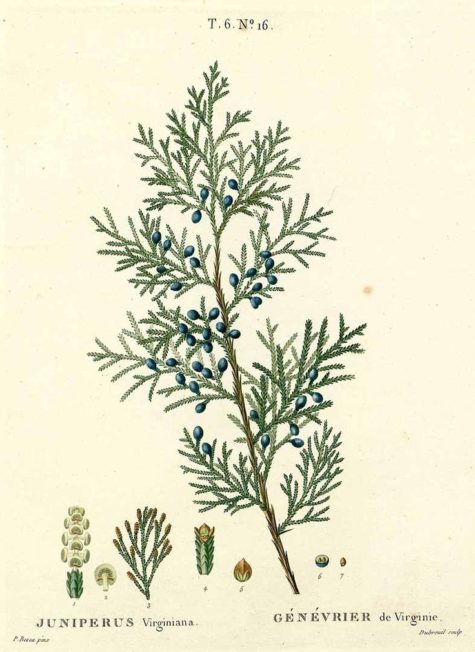
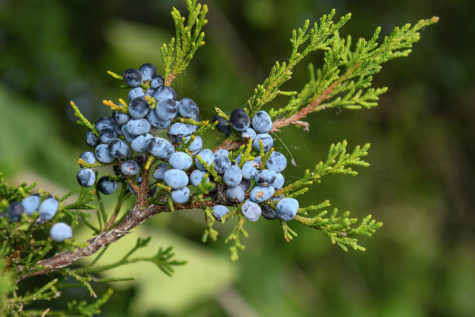
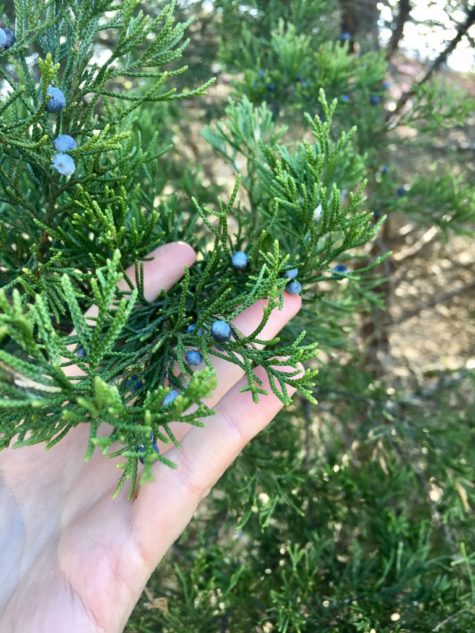
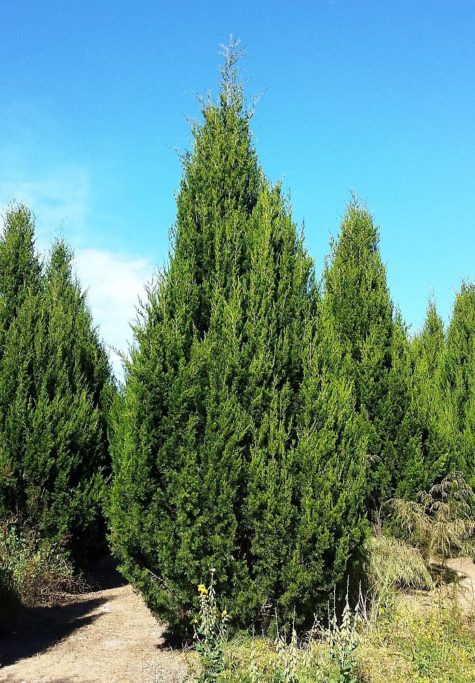
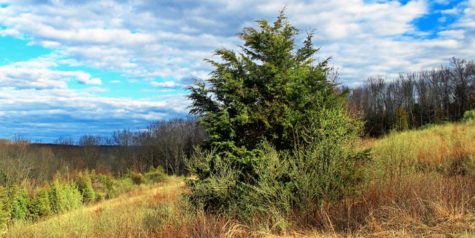
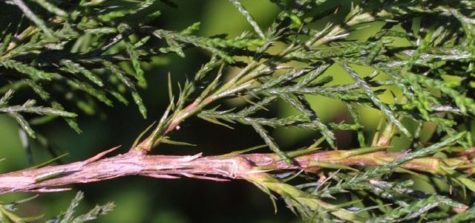

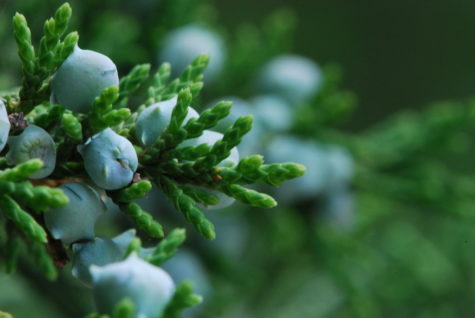
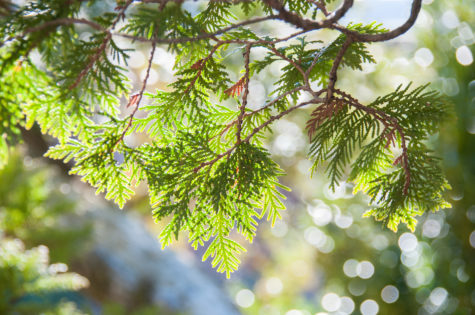
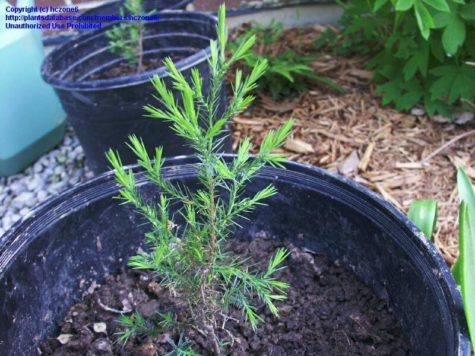
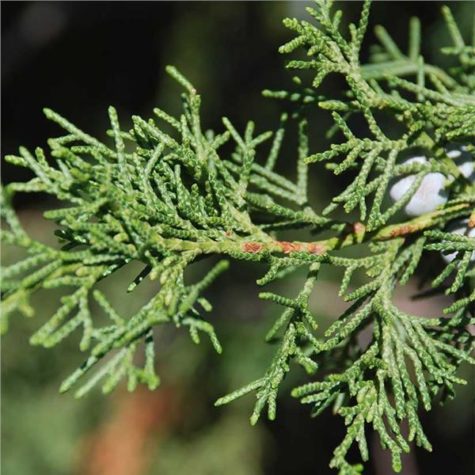
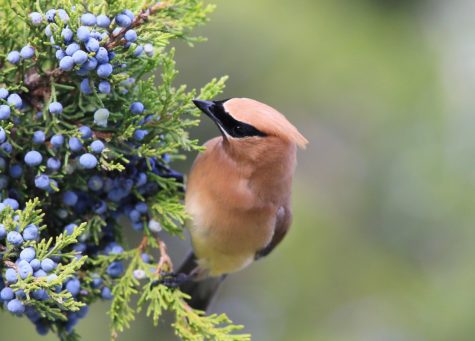
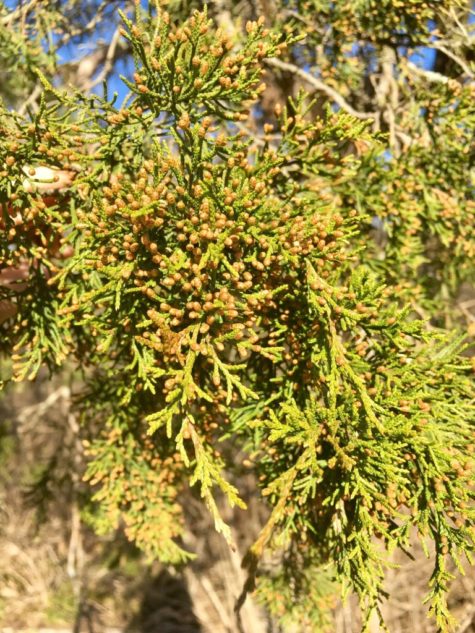
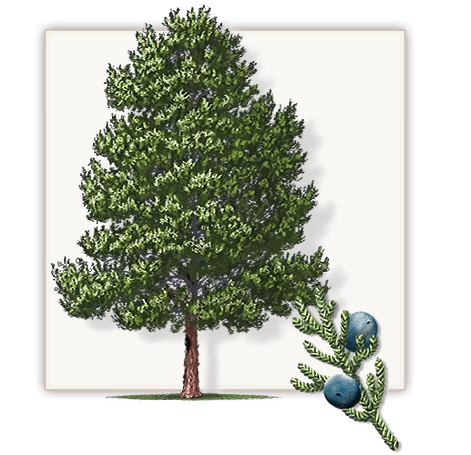


Leave a Reply